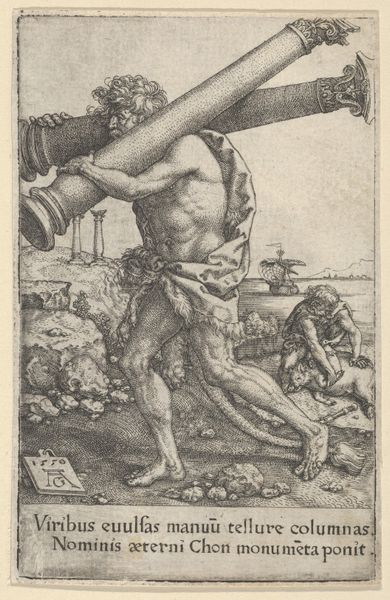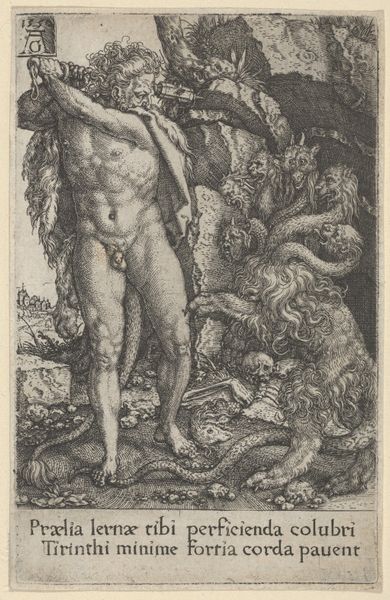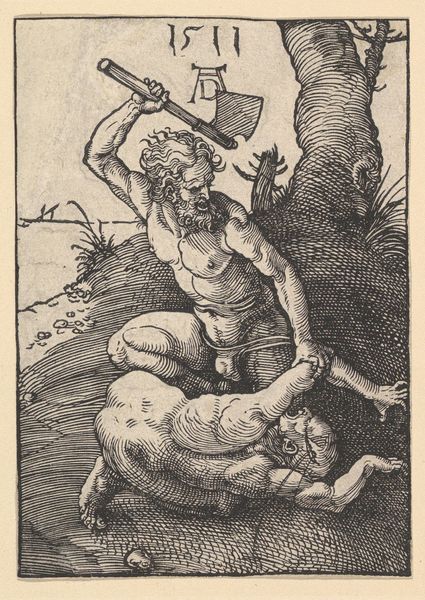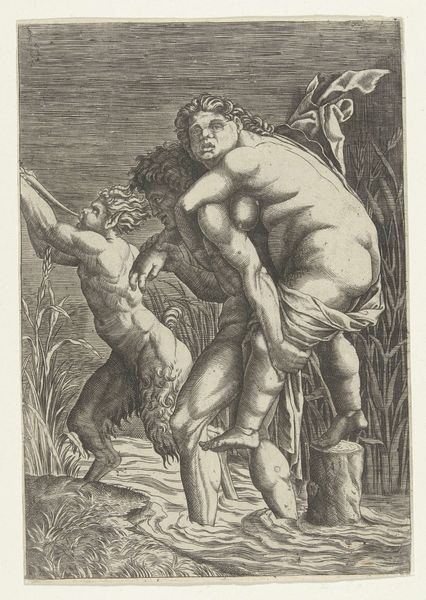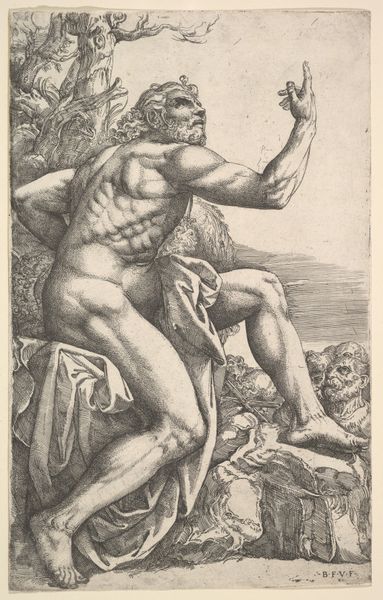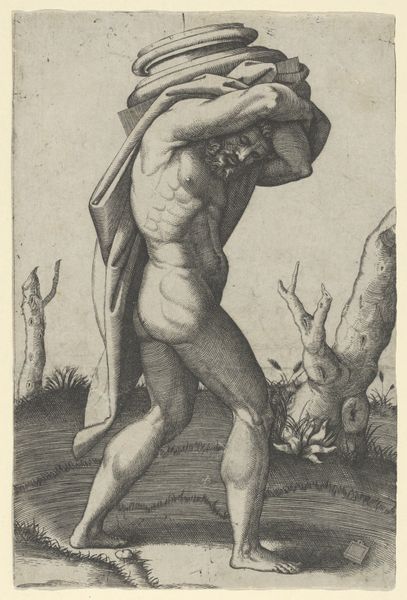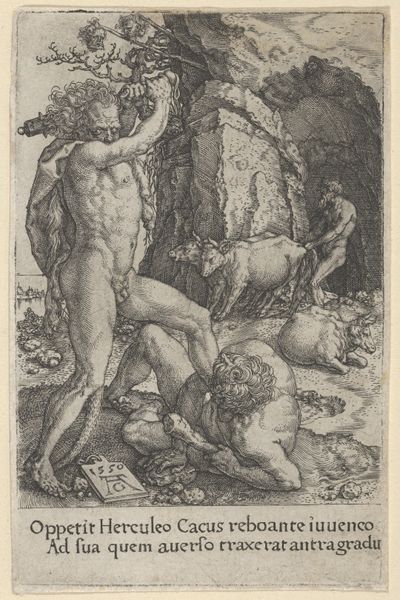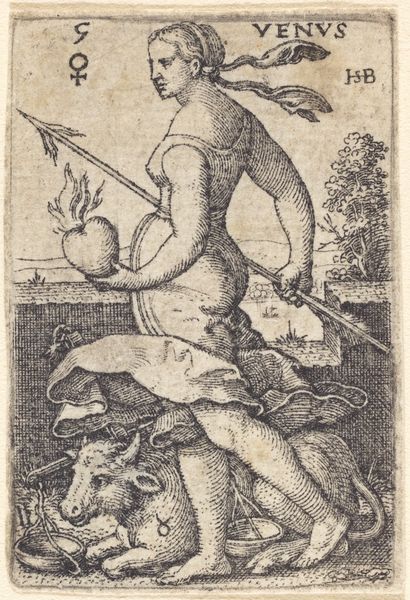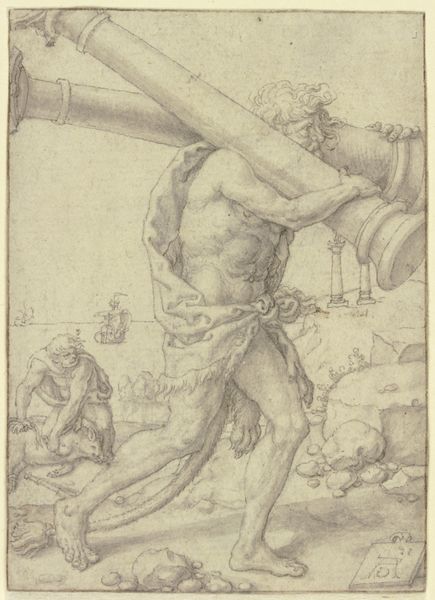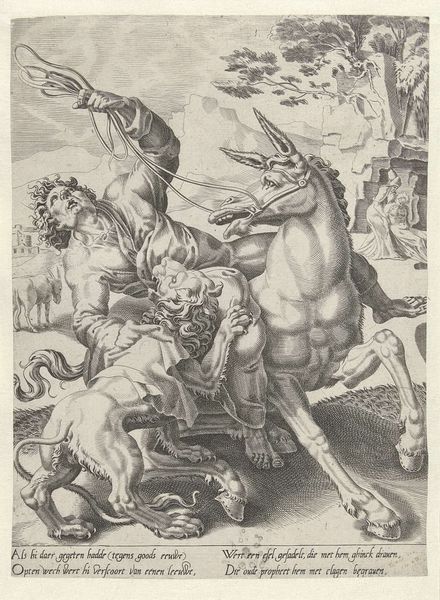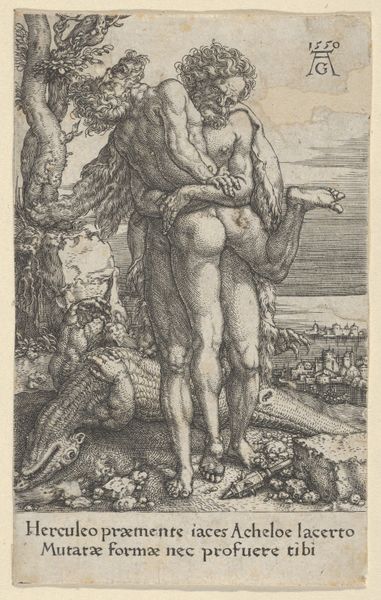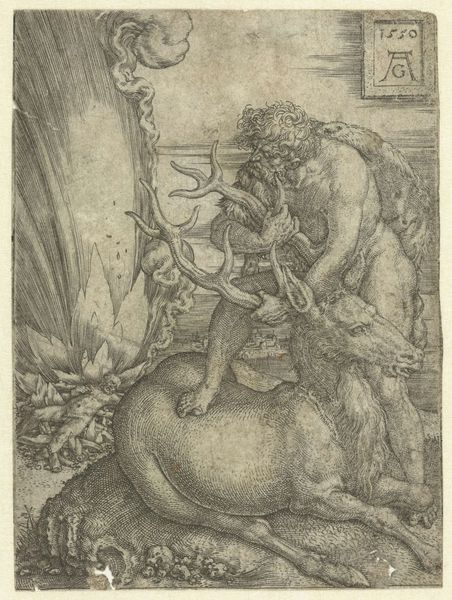
print, engraving
# print
#
old engraving style
#
figuration
#
line
#
history-painting
#
northern-renaissance
#
engraving
Dimensions: height 94 mm, width 67 mm, height 8 mm, width 67 mm
Copyright: Rijks Museum: Open Domain
Editor: We're looking at "Hercules Carrying the Pillars," an engraving by Heinrich Aldegrever, made around 1550. It's fascinating; the stark lines and detailed musculature give it a real sense of drama and power. What do you see in this piece beyond just the immediate image? Curator: Well, placing this print within its historical context reveals quite a bit. Aldegrever was working in a period of significant social and religious upheaval in Northern Europe. Consider Hercules – he’s not just a figure of strength, but one representing virtue and endurance. What do you think it meant to portray this figure, carrying pillars, in that specific time? Editor: Perhaps a statement on bearing burdens? Maybe a reference to societal pillars needing support? Curator: Exactly! The image could allude to the burdens of leadership, the need to uphold societal structures amidst religious reform, or even the struggle of the common person. The engraving, as a print, also meant wider accessibility. Think about it - who had access to monumental art? Who was likely to purchase and share engravings such as these? Editor: That makes sense. It’s reaching a different demographic, conveying a message to those outside the elite circles, perhaps bolstering their understanding or engagement in ongoing societal changes. It's interesting how a print, ostensibly a simple image, becomes entangled with social dynamics. Curator: Precisely. The "public" nature of this art, multiplied through printmaking, democratized access to classical allegories. How do you think the Rijksmuseum’s display of this piece contributes to its contemporary meaning? Editor: Now, it's presented in a context of art history, maybe losing some of its original political punch, but gaining recognition for its artistic and historical merit. I appreciate learning how even historical prints held some commentary about society in their time. Curator: And how our museums recontextualize these works, adding layers to their evolving narrative.
Comments
No comments
Be the first to comment and join the conversation on the ultimate creative platform.
